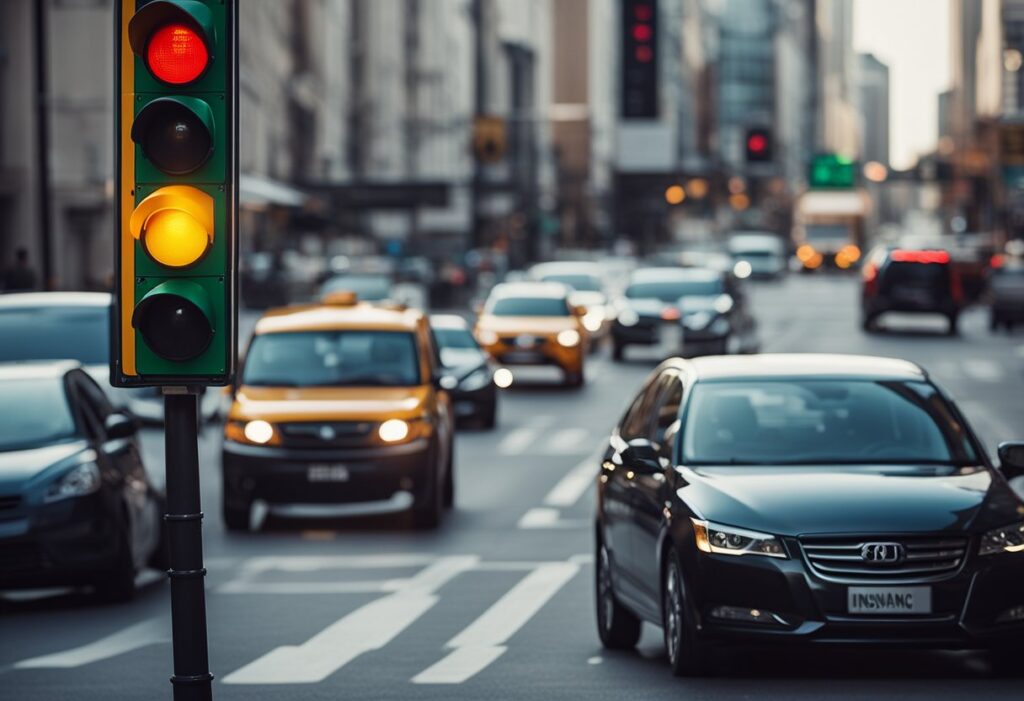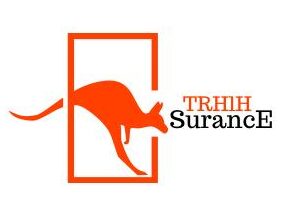Auto Insurance; Your Guide to Motor Coverage and Rates
Auto insurance is a type of policy that provides financial protection in case of an accident or theft involving your vehicle.
It is mandatory in most states in the US, and failure to have it can lead to legal and financial consequences.
knowing the different types of auto insurance policies, the claims process, and legal requirements is crucial in making informed decisions when choosing the right policy for you.

Choosing the right auto insurance policy can be overwhelming, but it is essential to ensure that you have adequate coverage.
Factors such as your driving history, the value of your vehicle, and your budget will determine the coverage you need.
Different insurance providers offer various discounts and savings, and it is essential to compare policies from different providers to get the best deal.
In this article, we will explore everything you need to know about auto insurance, from the types of policies available to the claims process and legal requirements.
Key Takeaways
- Understanding the different types of auto insurance policies, the claims process, and legal requirements is crucial in making informed decisions when choosing the right policy for you.
- Choosing the right auto insurance policy can be overwhelming, but it is essential to ensure that you have adequate coverage.
- Different insurance providers offer various discounts and savings, and it is essential to compare policies from different providers to get the best deal.
Auto Insurance

Auto insurance is a type of insurance that protects you financially in case of an accident or theft involving your vehicle.
It is important to understand the different types of coverage, policy limits, deductibles, and how premiums are calculated to make informed decisions about your auto insurance.
Types of Coverage
Auto insurance policies typically include several types of coverage, including:
- Liability Coverage: This coverage pays for damages and injuries you may cause to others in an accident. It is required in most states.
- Collision Coverage: This coverage pays for damages to your vehicle in case of a collision with another vehicle or object.
- Comprehensive Coverage: This coverage pays for damages to your vehicle caused by non-collision incidents such as theft, vandalism, or natural disasters.
- Personal Injury Protection (PIP): This coverage pays for medical expenses and lost wages for you and your passengers in case of an accident.
Policy Limits and Deductibles
Policy limits refer to the maximum amount your insurance company will pay for damages and injuries in case of an accident.
Deductibles refer to the amount you pay out of pocket before your insurance coverage kicks in. It is important to choose the right policy limits and deductibles that fit your needs and budget.
How Premiums Are Calculated
Auto insurance premiums are calculated based on several factors, including:
- Driving Record: Your driving record can impact your premiums. A clean driving record with no accidents or traffic violations can result in lower premiums.
- Vehicle Type: The type of vehicle you drive can impact your premiums. Expensive or high-performance vehicles may result in higher premiums.
- Location: Your location can impact your premiums. Living in an area with high crime rates or high traffic can result in higher premiums.
- Age and Gender: Younger drivers and male drivers may have higher premiums due to higher risk factors.
In conclusion, understanding auto insurance is crucial to make informed decisions about your coverage.
Knowing the different types of coverage, policy limits, deductibles, and how premiums are calculated can help you choose the right policy that fits your needs and budget.
Choosing the Right Auto Insurance Policy

When it comes to choosing the right auto insurance policy, there are a few key factors to consider.
By assessing your insurance needs, comparing insurance providers, and evaluating policy terms, you can make an informed decision that provides the coverage you need at a price you can afford.
Assessing Your Insurance Needs
Before you start shopping for auto insurance, it’s important to assess your insurance needs.
Consider factors such as your budget, the value of your vehicle, and your driving habits. If you have a newer or more expensive vehicle, you may want to consider a policy with comprehensive coverage.
If you have a long commute or frequently drive in heavy traffic, you may want to opt for a policy with higher liability limits.
Comparing Insurance Providers
Once you have a clear understanding of your insurance needs,
it’s time to start comparing insurance providers. Look for providers that offer the coverage you need at a price you can afford.
Be sure to read reviews and check ratings from third-party organizations to ensure the provider has a good reputation for customer service and claims handling.
Evaluating Policy Terms
When evaluating policy terms, it’s important to read the fine print. Look for any exclusions or limitations that may affect your coverage.
For example, some policies may exclude coverage for certain types of damage, such as damage caused by flooding or earthquakes.
Be sure to ask your insurance provider any questions you may have about policy terms to ensure you have a clear understanding of your coverage.
By following these steps, you can choose an auto insurance policy that meets your needs and provides the protection you need on the road.
The Claims Process

When you get into an accident or your car gets damaged, you need to file an auto insurance claim to get reimbursed for the damages.
The claims process involves several steps, including filing a claim, claim investigation, and settlement and repairs.
Filing a Claim
To file a claim, you need to contact your insurance company and provide them with details about the accident or damage.
This includes information such as the date and time of the incident, the location, and the names and contact information of any other parties involved.
You may also need to provide photos of the damage, a police report, and any other relevant information.
Claim Investigation
Once you have filed a claim, your insurance company will investigate the incident to determine who was at fault and the extent of the damages.
This may involve speaking to witnesses, reviewing police reports, and inspecting the damage to your vehicle.
The investigation may take some time, so be patient and provide your insurance company with any additional information they may need.
Settlement and Repairs
After the investigation is complete, your insurance company will determine the amount of your claim and offer you a settlement.
If you accept the settlement, your insurance company will arrange for repairs to your vehicle or provide you with a payment to cover the damages.
You may need to take your vehicle to an approved repair shop to have the repairs done.
In conclusion, the claims process can be complex, but it is important to follow the steps carefully to ensure that you receive the compensation you are entitled to.
By working with your insurance company and providing them with all the necessary information, you can get back on the road as soon as possible.
Legal Requirements

When it comes to auto insurance, every state in the US has its own set of laws and regulations that drivers must follow.
In this section, we will go over the two main legal requirements that you need to know about: minimum coverage laws and proof of insurance.
Minimum Coverage Laws
Each state sets its own minimum coverage requirements that drivers must have in order to legally operate their vehicles.
These requirements typically include liability coverage, which covers damages and injuries you may cause to others in an accident.
Some states may also require additional coverage such as personal injury protection or uninsured/underinsured motorist coverage.
It’s important to note that minimum coverage requirements vary by state and may not be enough to fully protect you in the event of an accident.
You may want to consider purchasing additional coverage beyond the minimum requirements to ensure that you are fully protected.
Here is a table summarizing the minimum coverage requirements for each state as of 2024:
| State | Minimum Liability Coverage |
|---|---|
| Alabama | $25,000 per person for bodily injury liability $50,000 per accident for bodily injury liability $25,000 property damage liability per accident |
| Alaska | $50,000 per person for bodily injury liability $100,000 per accident for bodily injury liability $25,000 property damage liability per accident |
| Arizona | $25,000 per person for bodily injury liability $50,000 per accident for bodily injury liability $15,000 property damage liability per accident |
| Arkansas | $25,000 per person for bodily injury liability $50,000 per accident for bodily injury liability $25,000 property damage liability per accident |
| California | $15,000 per person for bodily injury liability $30,000 per accident for bodily injury liability $5,000 property damage liability per accident |
| Colorado | $25,000 per person for bodily injury liability $50,000 per accident for bodily injury liability $15,000 property damage liability per accident |
| Connecticut | $25,000 per person for bodily injury liability $50,000 per accident for bodily injury liability $25,000 property damage liability per accident |
| Delaware | $25,000 per person for bodily injury liability $50,000 per accident for bodily injury liability $10,000 property damage liability per accident |
| Florida | $10,000 per person for personal injury protection $20,000 per accident for personal injury protection $10,000 property damage liability per accident |
| Georgia | $25,000 per person for bodily injury liability $50,000 per accident for bodily injury liability $25,000 property damage liability per accident |
| Hawaii | $20,000 per person for bodily injury liability $40,000 per accident for bodily injury liability $10,000 property damage liability per accident |
| Idaho | $25,000 per person for bodily injury liability $50,000 per accident for bodily injury liability $15,000 property damage liability per accident |
| Illinois | $25,000 per person for bodily injury liability $50,000 per accident for bodily injury liability $20,000 property damage liability per accident |
| Indiana | $25,000 per person for bodily injury liability $50,000 per accident for bodily injury liability $25,000 property damage liability per accident |
| Iowa | $20,000 per person for bodily injury liability $40,000 per accident for bodily injury liability $15,000 property damage liability per accident |
| Kansas | $25,000 per person for bodily injury liability $50,000 per accident for bodily injury liability $25,000 property damage liability per accident |
| Kentucky | $25,000 per person for bodily injury liability $50,000 per accident for bodily injury liability $25,000 property damage liability per accident |
| Louisiana | $15,000 per person for bodily injury liability $30,000 per accident for bodily injury liability $25,000 property damage liability per accident |
| Maine | $50,000 per person for bodily injury liability $100,000 per accident for bodily injury liability $25,000 property damage liability per accident |
| Maryland | $30,000 per person for bodily injury liability $60,000 per accident for bodily injury liability $15,000 property damage liability per accident |
| Massachusetts | $20,000 per person for bodily injury liability $40,000 per accident for bodily injury liability $5,000 property damage liability per accident |
| Michigan | $250,000 per person for bodily injury liability and property damage liability |
| Minnesota | $30,000 per person for bodily injury liability $60,000 per accident for bodily injury liability $10,000 property damage liability per accident |
| Mississippi | $25,000 per person for bodily injury liability $50,000 per accident for bodily injury liability $25,000 property damage liability per accident |
| Missouri | $25,000 per person for bodily injury liability $50,000 per accident for bodily injury liability $10,000 property damage liability per accident |
| Montana | $25,000 per person for bodily injury liability $50,000 per accident for bodily injury liability $20,000 property damage liability per accident |
| Nebraska | $25,000 per person for bodily injury liability $50,000 per accident for bodily injury liability $25,000 property damage liability per accident |
| Nevada | $25,000 per person for bodily injury liability $50,000 per accident for bodily injury liability $20,000 property damage liability per accident |
| New Hampshire | None |
| New Jersey | $15,000 per person for bodily injury liability $30,000 per accident for bodily injury liability $5,000 property damage liability per accident |
| New Mexico | $25,000 per person for bodily injury liability $50,000 per accident for bodily injury liability $10,000 property damage liability per accident |
| New York | $25,000 per person for bodily injury liability $50,000 per accident for bodily injury liability $10,000 property damage liability per accident |
| North Carolina | $30,000 per person for bodily injury liability $60,000 per accident for bodily injury liability $25,000 property damage liability per accident |
| North Dakota | $25,000 per person for bodily injury liability $50,000 per accident for bodily injury liability $25,000 property damage liability per accident |
| Ohio | $25,000 per person for bodily injury liability $50,000 per accident for bodily injury liability $25,000 property damage liability per accident |
| Oklahoma | $25,000 per person for bodily injury liability $50,000 per accident for bodily injury liability $25,000 property damage liability per accident |
| Oregon | $25,000 per person for bodily injury liability $50,000 per accident for bodily injury liability $20,000 property damage liability per accident |
| Pennsylvania | $15,000 per person for bodily injury liability $30,000 per accident for bodily injury liability $5,000 property damage liability per accident |
| Rhode Island | $25,000 per person for bodily injury liability $50,000 per accident for bodily injury liability $25,000 property damage liability per accident |
| South Carolina | $25,000 per person for bodily injury liability $50,000 per accident for bodily injury liability $25,000 property damage liability per accident |
| South Dakota | $25,000 per person for bodily injury liability $50,000 per accident for bodily injury liability $25,000 property damage liability per accident |
| Tennessee | $25,000 per person for bodily injury liability $50,000 per accident for bodily injury liability $15,000 property damage liability per accident |
| Texas | $30,000 per person for bodily injury liability $60,000 per accident for bodily injury liability $25,000 property damage liability per accident |
| Utah | $25,000 per person for bodily injury liability $65,000 per accident for bodily injury liability $15,000 property damage liability per accident |
| Vermont | $25,000 per person for bodily injury liability $50,000 per accident for bodily injury liability $10,000 property damage liability per accident |
| Virginia | None |
| Washington | $25,000 per person for bodily injury liability $50,000 per accident for bodily injury liability $10,000 property damage liability per accident |
| West Virginia | $25,000 per person for bodily injury liability $50,000 per accident for bodily injury liability $25,000 property damage liability per accident |
| Wisconsin | $25,000 per person for bodily injury liability $50,000 per accident for bodily injury liability $10,000 property damage liability per accident |
| Wyoming | $25,000 per person for bodily injury liability $50,000 per accident for bodily injury liability $20,000 property damage liability per accident |
Proof of Insurance
In addition to having the minimum required coverage, most states also require drivers to carry proof of insurance with them at all times while driving.
This can be in the form of an insurance card or a digital copy on your phone.
If you are caught driving without proof of insurance, you may face fines or other penalties.
It’s important to make sure that you have your proof of insurance with you whenever you are driving to avoid any legal issues.
In conclusion, understanding the legal requirements for auto insurance in your state is crucial to ensure that you are driving legally and protected in the event of an accident.
Be sure to check your state’s minimum coverage requirements and carry proof of insurance with you at all times.







